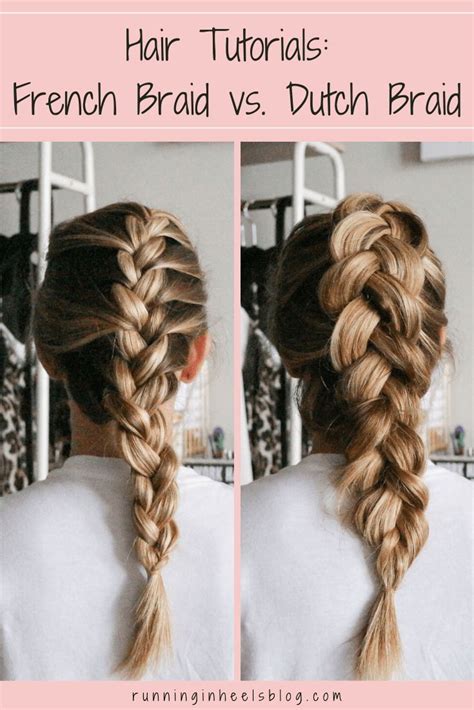When it comes to creating intricate and eye-catching hairstyles, braids reign supreme. Among the most popular braiding techniques are Dutch braids and French braids, each offering its own distinct look and versatility. This comprehensive guide delves into the world of Dutch and French braids, providing a thorough comparison of their characteristics, applications, and variations.

Dutch Braids: A Bold and Edgy Approach
Introduction
Dutch braids, also known as inverted braids, are characterized by their raised pattern that creates an illusion of height and volume. This unique braiding style involves taking the hair from underneath the strands, creating a bold and edgy effect.
Characteristics
* Raised pattern with a 3D effect
* Locks appear to be pulled over each other
* Typically secured with a hair tie or ribbon
Applications
* Ideal for adding height to the crown
* Create a strong and durable hairstyle
* Suitable for both long and medium-length hair
Variations
* Classic Dutch braid: Simple and versatile, perfect for a variety of occasions
* Fishtail Dutch braid: Intricately woven, resembles a fishbone pattern
* Double Dutch braid: Two Dutch braids intertwined, creating a striking look
French Braids: A Classic and Elegant Choice
Introduction
French braids are a timeless style that exudes elegance and sophistication. This classic braiding technique involves taking hair from the sides and weaving it into the main braid, creating a smooth and intricate pattern.
Characteristics
* Flattened pattern with a seamless appearance
* Hair is crossed over each other
* Secured with a hair tie or bobby pins
Applications
* Perfect for creating a polished and feminine look
* Ideal for keeping hair out of the face or securing it for long periods
* Suitable for all hair types and lengths
Variations
* Classic French braid: A simple and graceful braid, suitable for everyday wear
* Dutch French braid: A fusion of Dutch and French braiding, creates a unique and eye-catching style
* Waterfall French braid: Loosely woven, with strands flowing down like a waterfall
Comparison of Dutch and French Braids
| Feature | Dutch Braid | French Braid |
|---|---|---|
| Pattern | Raised and bold | Flattened and seamless |
| Appearance | Edgy and textured | Elegant and polished |
| Weaving Technique | Hair taken from underneath | Hair taken from the sides |
| Suitable Hair Length | Long or medium | All hair types and lengths |
| Applications | Adding height, durable hairstyles | Keeping hair tidy, polished looks |
Which Braid is Right for You?
Consider your hair type and length:
* Dutch braids are best suited for thicker, longer hair to create volume and height.
* French braids are versatile and work well for all hair types and lengths.
Think about the desired effect:
* If you want a bold and edgy look, opt for Dutch braids.
* For a classic and elegant style, choose French braids.
Match the occasion:
* Dutch braids are perfect for casual or sporty events.
* French braids are ideal for formal or special occasions.
Creative Applications of Dutch and French Braids
Beyond their traditional uses, Dutch and French braids offer endless possibilities for creative styling.
Crown Braids:
Create a delicate and eye-catching headband by braiding hair around the crown of the head.
Braided Buns:
Elevate a classic bun by incorporating Dutch or French braids for added texture and interest.
Side-Swept Braids:
Sweep hair to one side and braid it for a chic and romantic look.
Reverse Braids:
Create a unique and whimsical effect by braiding hair in reverse (from the tips to the roots).
Conclusion
Dutch and French braids are versatile and stylish braiding techniques that offer a wide range of possibilities for creating intricate and eye-catching hairstyles. Whether you prefer the bold volume of Dutch braids or the elegant simplicity of French braids, there’s a braiding style to suit every hair type, length, and occasion. By understanding the characteristics, applications, and variations of these two popular braids, you can unleash your inner hair stylist and create stunning looks that turn heads.
